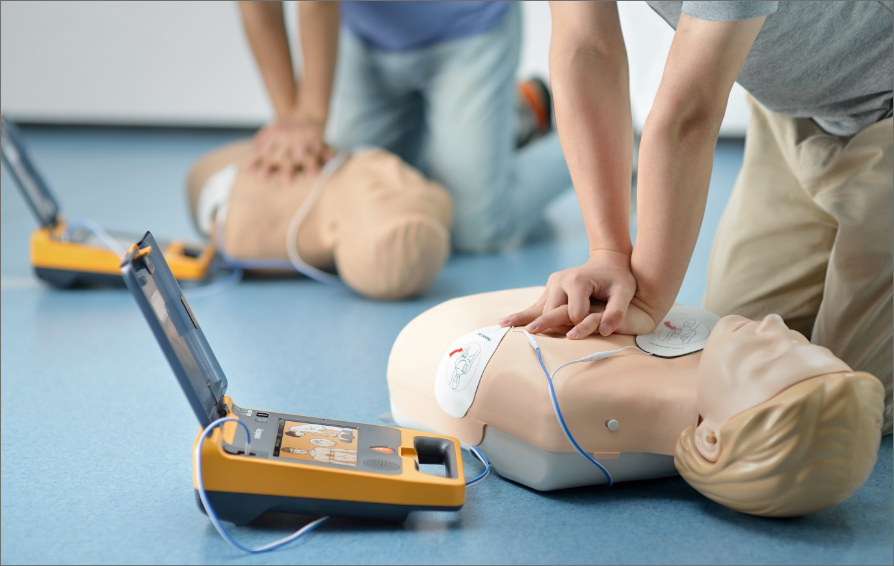An automated external defibrillator (AED)¹ is a life-saving device that can be used to help someone experiencing sudden cardiac arrest². It is important to know how to properly use an AED in order to provide immediate assistance and increase the chances of survival. In this blog post, we will discuss the general instructions for using an AED.
1. Assess the situation
Before using an AED, it is crucial to assess the situation and ensure the safety of both the victim and the rescuer. Make sure the area is clear of any hazards or potential dangers.
2. Call for help
While preparing to use the AED, call for emergency medical services. Time is of the essence in a cardiac arrest situation, so it is important to get professional help on the way as soon as possible.
3. Turn on the AED
Once the AED is turned on, it will provide voice prompts and visual instructions to guide you through the process. Listen carefully to the prompts and follow the instructions step by step.
4. Expose the victim's chest
Remove any clothing or jewellery from the victim's chest to ensure proper contact with the AED pads. If the victim is wet, dry their chest before applying the pads.
5. Apply the pads
Take out the AED pads from their packaging and apply them to the victim's bare chest as indicated by the AED's instructions. One pad should be placed on the upper right side of the chest, just below the collarbone, and the other pad on the lower left side of the chest, below the armpit.
6. Stand clear and analyze
Make sure no one is touching the victim and stand clear while the AED analyzes the heart rhythm. The AED will determine if a shock is needed or if CPR should be performed.
7. Deliver a shock (if advised)
If the AED advises delivering a shock, make sure no one is touching the victim and press the shock button as instructed. Stand clear and ensure everyone else is clear of the victim before delivering the shock.
8. Perform CPR
If the AED does not advise a shock, or after delivering a shock, immediately begin performing CPR. Follow the AED's instructions for the correct compression and ventilation ratio. To learn how to perform CPR, click here³.
9. Continue following AED prompts
Throughout the resuscitation process, continue to follow the AED's prompts and instructions. It will guide you on when to deliver additional shocks, when to resume CPR, and when to stop and wait for medical professionals to arrive.
10. Hand over to medical professionals
Once medical professionals arrive, hand over the care of the victim to them. Provide them with any information they may need about the situation and the actions taken.
Remember, these are general instructions for using an AED. It is important to receive proper training and certification in CPR and AED usage to ensure you are prepared to respond effectively in an emergency situation. By knowing how to use an AED, you can potentially save a life.

References:
2. What is sudden cardiac arrest? | Cardiac X
3. How to perform Cardiopulmonary Resuscitation (CPR) | Cardiac X

